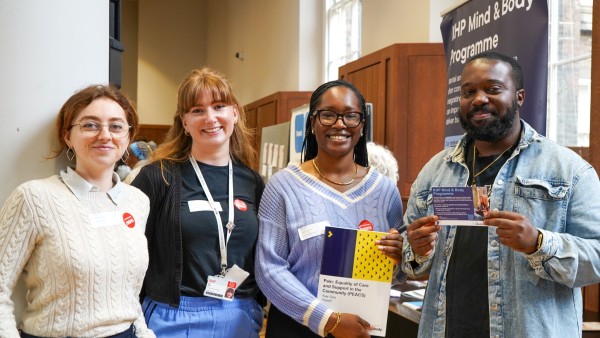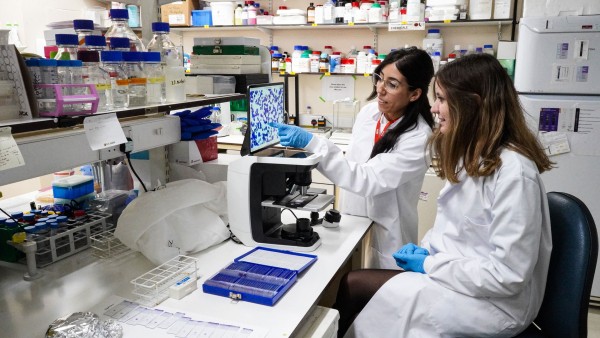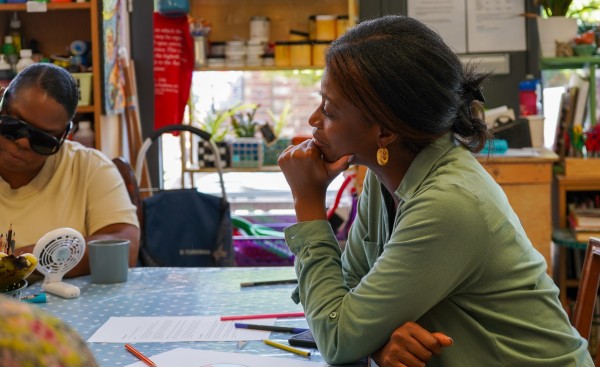13 August 2024
Millions of people may claim to be Taylor Swift's biggest fan, but can anyone prove it? One way we might be able to evidence fandom is by finding its neural signature. Dr Eamonn Walsh, Reader in Neuroscience Education and Programme Lead for MSc Neuroscience, took up this challenge in the recent Channel 4 documentary 'The Rise and Rise of Taylor Swift'.
In this documentary Dr Walsh and colleagues scanned the brain of King’s College London medical student, Morgan, a self-proclaimed and ardent Taylor Swift fan - or 'Swiftie' - to see what was happening in their brain when they listened to their favourite Taylor Swift music. King's Health Partners met with Dr Walsh to discuss what he found.
Why did you want to scan the brain of a Swiftie?
I had previously been part of a similar documentary a couple of years ago with Dr Michael Mosley, and together we conducted a brain imaging study which looked at using hypnosis as a tool for investigating psychoses. By contributing to studies like these I hope to better understand mental health and find new ways of improving wellbeing for all.
I had not studied fandom before, so I was excited when Channel 4 approached King’s College London with this opportunity. I didn’t know much about Taylor Swift at the time either, but I was aware that globally billions of people do. What struck me was that fans feel as if they know Taylor as a friend - having a really strong sense of personal connection with her. In education we sometimes struggle to develop that same sense of connection with our students and with each other. Of course, music is a billion-dollar industry, nevertheless there is something Taylor Swift does that connects her with her fans personally.
Morgan, our Taylor Swift fan who took part in this study, said they felt as if they knew Taylor as though she were a close friend. We scanned Morgan’s mind because we wanted to see if we could learn how to achieve that sense of connection. I think in education we could learn a lot from that.
What exactly did you see inside the brain of a Swiftie?
Brain imaging studies usually work on group averages so they are less meaningful when applied to an individual – so we do need to be careful. What we got from this study was an image of Morgan's brain, which showed strong activation happening when Morgan listened to their favourite Taylor music. The upper back part of their brain is where we see self-referential thought happening - which involves thinking about oneself and reflecting on one's own experiences, emotions, and behaviours.
Lower down is the visual cortex - activity here suggests the individual is recalling memories, much like a movie in their head. When you see activity in the self-referential and visual parts of the brain at the same time, it can suggest there is a recall of personal memories that are very visual.
We also saw lots of activity at the front of the brain which acts much like a conductor overseeing and coordinating the activities of the rest of the brain. As Morgan listened to their favourite Taylor tracks, it seems like the front of their brain was recalling rich, sensory details stored in the back. This caused Morgan to have a very deep, meaningful relived experience with a strong sense of connection, which is exactly what they reported after. Morgan said it really felt like they were at a Taylor concert and that’s what we could see in their brain images too.
Does this provide evidence of fandom?
This was quite an unusual study so I can’t say we were able to isolate the neural signature of fandom. However, what I do know is that Morgan’s brain activity when listening to their favourite Taylor Swift tracks was very strong when compared to their brain activity when listening to control music from a different artist. Morgan said afterwards that they were glad to discover they were not just a "conscious Swiftie” but that they were a “subconscious Swiftie” too!
How could learning about fandom influence neuroscience?
The next question is if you take more Swifties, would their brains synchronise when they listen to Taylor Swift music together? Maybe this strong sense of connection people feel could be a type of social resonance. If we could understand the feelings that people report and ‘put these in a bottle’, you know to replay later, like a soundtrack or a video, it could be incredibly powerful for education and beyond.





